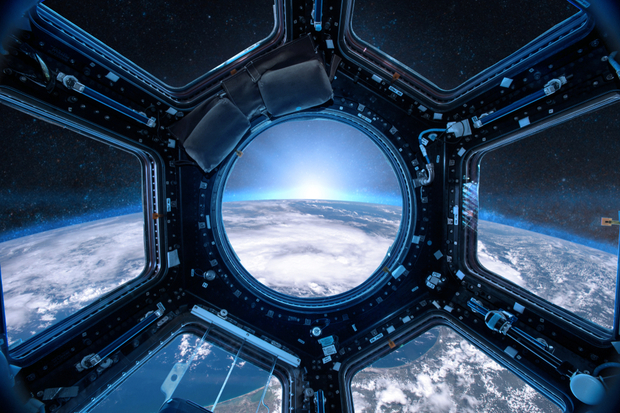
Potentially dangerous fungi are living on space stations and spacecraft right now — but we have no idea if they're harmful for astronauts and scientists need to do much more research to figure that out. That's the takeaway from a new study published April 11 in the journal Astrobiology reviewing what's known about mycotoxins — fungal compounds that can harm humans — in space.
The Earth is teeming with microscopic inhabitants such as bacteria and single-celled fungi. So it's no surprise that these constant companions have managed to hitchhike with humans aboard the International Space Station and other space-going vessels.
While scientists have done a fair amount of research on bacteria in space, fungi remain relatively understudied. Part of the reason is that these microbial mushroom cousins typically cause health problems only in people who live under stressful conditions or who have severely compromised immune systems. [6 Superbugs to Watch Out For]
But the prolonged stress of spaceflight has been shown to affect astronauts' immune systems. Therefore, a team at Ghent University in Belgium wondered how fungi might affect astronauts' health. In a review of the scientific literature, the little that came up was mostly related to the detection of different fungal species.
"But about mycotoxins we found almost nothing," Sarah de Saeger, a pharmaceutical scientist at Ghent University and co-author of the new paper, told Live Science.
This is problematic because the specific fungi that have been found on spacefaring vessels, such as Aspergillus flavus and members of the genus Alternaria, are known to produce carcinogenic and immune-depressing compounds, she said, and these molecules often form when fungi are stressed. (If space is a stressful environment for humans, it may be stressful for fungi as well.) Whether or not astronauts are actually being affected by such toxins remains unknown, she added.
De Saeger's team recommends that space agencies do a better job of detecting and researching mycotoxins in spacecraft. In particular, they suggest that new methods should be developed for monitoring the surfaces and atmospheres of spacecraft. Currently, most fungal detections are made by sending samples back to laboratories on Earth, but that won't be possible for long-duration missions, such as a crewed flight to Mars.
Sign up for the Live Science daily newsletter now
Get the world’s most fascinating discoveries delivered straight to your inbox.
De Saeger stressed that the presence of mycotoxins doesn't necessarily mean danger to astronauts. Here on Earth, people are often exposed to these compounds but their specific contribution to different diseases is not always easy to trace. On the other hand, nobody quite knows how fungi might grow and evolve in the enclosed environment of a long-lasting space mission, de Saeger said.
"I think the biggest message is that fungi and bacteria are an integral part of human bodies," Adriana Blachowicz, who has investigated fungi on the International Space Station but was not involved in the recent study, told Live Science. "Wherever we go, fungi and bacteria will follow."
Bacteria have been shown to become more virulent in space, and so there is some worry that fungi could as well, she added.
- 7 Everyday Things That Happen Strangely in Space
- Sending Humans to Mars: 8 Steps to Red Planet Colonization
- When Space Attacks: The 6 Craziest Meteor Impacts
Originally published on Live Science.

Adam Mann is a freelance journalist with over a decade of experience, specializing in astronomy and physics stories. He has a bachelor's degree in astrophysics from UC Berkeley. His work has appeared in the New Yorker, New York Times, National Geographic, Wall Street Journal, Wired, Nature, Science, and many other places. He lives in Oakland, California, where he enjoys riding his bike.










